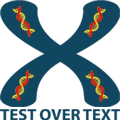BA Book: Divided Testaments

In the beginning, there were two doctrines.
One served the project.
The other served the purpose.
Business analysis is not just a function — it’s a philosophy. And in our profession, two dominant schools of thought have shaped how we define, deliver, and sustain change: PMI’s Business Analysis Practice Guide and the BABOK® Guide by IIBA.
This comparison is not about tools or techniques — it’s about perspective. About worldview. About what we believe the business analyst exists to do.
In the PMI view, the business analyst operates within the project lifecycle, focused on delivery, execution, and supporting the achievement of scope. It’s practical, aligned with the PMBOK®, and useful in environments where analysis is a subset of project control.
In the BABOK view, business analysis transcends projects. It is seen as a discipline of sensemaking, a strategic role designed to navigate complexity, define value, and orchestrate change at all levels — from Agile teams to enterprise architecture.
This isn’t a critique. It’s a recognition that what we align to shapes what we see. Comparing the two side-by-side allowed me to reflect more deeply on the role of the analyst — not just as a documenter of requirements, but as a custodian of clarity and value.
🧊 A cold prayer from a business analyst:
“May your analysis not end where the project does.
May you see beyond the deliverables into the system.
May your need trace back to value—not just scope.”

Other Business Analysis Articles:

